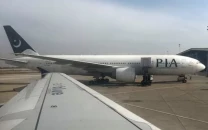Elections in India, Pakistan and chances of rapprochement

Modi, compared to the famed Nehruvian era, is going to be the first Prime Minister of India, in modern times, who has completed ten years and starts on another third five-year tenure.
Undeniably, Modi has created a footprint, from his indigent beginnings, of aggressive leadership and geo-economic achievements, that has left a mark not only in India but also at the world stage, although domestically he is blamed for steering the country away from its foundational, professed secular, enlightened moorings.
The first ten years of Modi’s tenure are often labelled as marked by illiberalism, exclusivity, ethnographic nationalism, xenophobia, grit and strong handedness towards minorities, press and media. Despite remarkable economic successes, these socio-political aberrations may have cost, besides the incumbency factor, the BJP a price in its 2024 election performance.
In its relations with its regional neighbours, particularly its largest western neighbour, no leader or government in India could hope to feel as comfortable and complacent in trying to conclude an entente with Pakistan.
One wonders whether going into the fifteenth year of his rule, one may discover a Modi yearning to leave behind a legacy of peace between India and Pakistan that no leader during the last three quarters of a century has been able to achieve, despite other attainments.
Power always desires to leave behind a famed heritage. A man of national resurrection, revival and progress may perhaps discover his incompleteness, in his finale, unless the grand detente between Pakistan and India is consummated to deliver poverty alleviation and welfare to the people of the region, where 40% and 67% of the population, respectively, live below the poverty line.
Although any such friendly overture by Modi towards Pakistan may stir up the hornet’s nest among India’s rightist nationalists and sympathising moderates, who painfully recall Kargil, the Parliament attack, Bombay terrorist incident, Pathankot and Pulwama that led to the Balakot incident (that could’ve very nearly conflagrated into a nuclear flare-out), no Indian government, other than Modi’s in its 15th year of tenancy, will or can be in so easy a position to ameliorate its relations with Pakistan and attain the summum bonum of its external relations.
Two new governments have come into power on both sides of the zero-line in 2024. Both face their peculiar strategic, political, social and economic challenges, strengths and weaknesses. Modi’s NDA government may have politically dwindled in numbers compared to its two previous tenures, yet it can count on continuing its successful economic gains.
In Pakistan, a paradigm shift seems to have occurred with the propinquity of a civilian government with the so-called establishment in contradistinction to a party that arose during the 2011s with the support of the army, but which now stands in cudgels with the establishment due to a VONC, severally attributed to the USA and to the then army boss, who until the end was offered lifetime tenureship if the VONC was skittled down.
Gen Bajwa, the previous army chief, during his last days, had forwarded a hand of friendship to India advocating promotion of ‘geo-economics’ versus ‘geo-politics’. As a sequel the then civilian government mooted partial opening of cross-border trade with India. The hawks in the government scuttled the proposal on grounds that the political opponents would get a chance of beating the government with its own stick of ‘Modi ka jo yar heiy, ghaddar heiy, ghaddar heiy’ which were hurled at the then government at the time of Modi’s historic, surprise visit ( Dec 2015) to Lahore.
There is a strong lobby which believes that the best opportunity — if ever one were to arise, in the present, new, regional geopolitical environment, for some movement to be made, however tentative and risky, towards a semblance of an Indo-Pak entente — can be when Modi is at the helm in Delhi and Nawaz Sharif is in a position of a political godfather of his ruling party. In addition the government can count upon the active support of other main coalition partners.
The Bajwa doctrine with regards to India, without compromises on fundamentals, which tended towards opening of doors, even if in a tentative manner towards India, continues to underlie the fundamental attitude of the military.
The compulsions that direct such a policy are quite evident: due to the dire economic straits of the economy, the military faces a severe financial crunch, in the absence of American and western military assistance, and has to bite the brittle bullet competing for rare resources with civilian uses in a highly charged political atmosphere.
For once there seems to be a moment where, on the Pakistan side, both the military as well as the political government seem to see eye to eye on the issue of improvement of relations with the eastern neighbour, realising the vast economic gains that may accrue to Pakistan through trade opening, which itself could wield up to $ 30-40 billion as gains to Pakistan in commodity trade, besides other economic spillover effects. Opening of land-based trade should help in appreciable reduction in inflation of consumables, bringing immediate relief to the common man.
It was due to the third track diplomacy that led to ceasefire across the Line of Control between Indian and Pakistan on February 25, 2021. This ceasefire has proved to be the most enduring CBM and LOC ceasefire since 2016 in more than a decade. The ceasefire is remarkable for its endurance despite change of political and military leadership on both sides, terrorist attacks and shifting regional relations.
Without ceasefire in place, the LOC has been among the world’s most violent areas, with civilians often the highest casualties for violence that rarely had any operational or strategic purpose. As the media environment between the two countries became increasingly charged, even such localised violence could escalate between the two nuclear neighbours.
Although great risks still exist to peace in absence of firm institutional basis for diplomatic relations and a situation fraught with mutual recriminations and doubts, the continuance of the LOC ceasefire since Feb 2021 could provide opportunities for bolstering i) reopening overt dialogue channels, ii) institutionalisation of normalcy on the LOC, and iii) exploring other military, economic and civilian CBMs.
















COMMENTS
Comments are moderated and generally will be posted if they are on-topic and not abusive.
For more information, please see our Comments FAQ